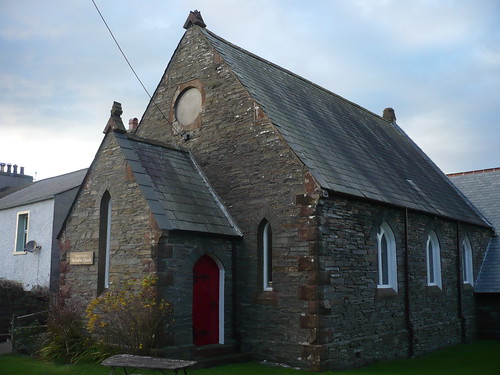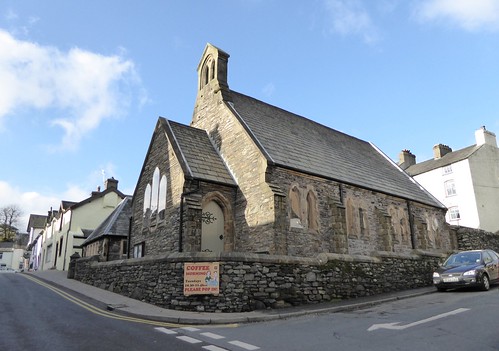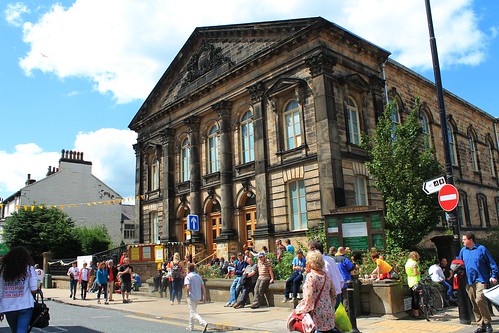the sign welcomes anyone to pop in for Morning Coffee. The chapel has stood here on Princes Street since 1875 and was gifted by Nathaniel Caine (1808-1877) a Liverpool industrialist and co-owner of the nearby Hodbarrow Mines who considered the religious facilities in the area inadequate. He funded a number of nonconformist chapels in the 1860s and 1870s and although he himself was a baptist his faith was such he readily funded chapel buildings for those denominations that needed them.
The reason there was a shortage of religious building here in the second half of the 19th Century was the large influx of workers and their families to work in the booming local industries. The chapel cost £2,500 to build and is made of the very durable Kirkby Stone, still quarried locally.
In contrast the Marshside Methodist chapel, located in one of the hamlets that makes up the village of Kirkby
 |
| Marshside Methodist Chapel |
These simple chapels contrast with the one in Harrogate, Yorkshire, built in 1862 and
a much larger and ornate example. The heartlands of Methodism were the north of England, Cornwall and Wales, its egalitarian message contrasting with the established church which it split from. This like the first chapel I showed in Broughton both started life as Wesleyan Methodist Chapels. In 1932 all the strands of Methodism reunited and today are simply called the Methodist Church of Great Britain.
The archives of the Methodist Church and the papers of the founder of the religion John Wesley are held by the John Rylands Library of Manchester University which opened its doors in 1900 and also contains Wesley's statue alongside John Wycliff, William Shakespeare, John Dalton, William Caxton, Johannes Gutenberg and Francis Bacon. The choices of statues are explained here. This cathedral of books has a magnificent reading room -
| "The John Rylands Library" by Mdbeckwith - Licensed under CC BY 3.0 via Wikimedia Commons" |
An entry to ABC Wednesday, a journey through the alphabet, this week sojourning at M here






6 comments:
Impressive architectures. I'm partial to stone churches.
My ABC WEDNESDAY
I was a good METHODIST for a number of years!
ROG, ABCW
What is the difference between Methodism. and Calvinism?
I belong to a Calvinistic congregation, but I am a free-thinker and many people of my church are not as strict as they used to be. We have a good community in spite of all the differences.
I wish you a great week.
Wil, ABCW
Nothing beats a good Methodist coffee morning!
I would enjoy a meander around that library, too. The plain churches always look best to me.
The View from the Top of the Ladder
Post a Comment